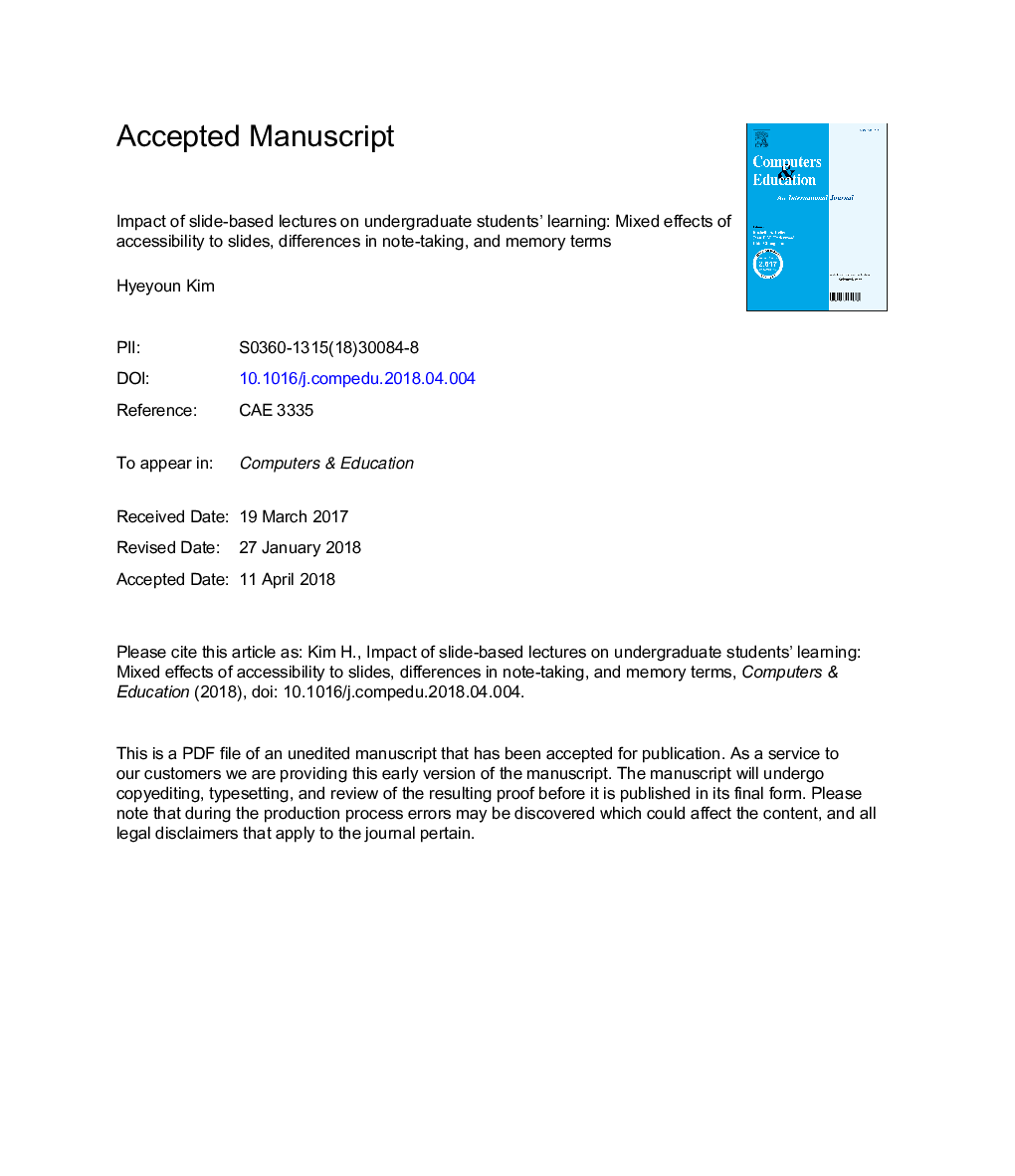| Article ID | Journal | Published Year | Pages | File Type |
|---|---|---|---|---|
| 6834659 | Computers & Education | 2018 | 39 Pages |
Abstract
This paper addresses the effects of access to slide copies during lectures using PowerPoint® for undergraduate students on their learning outcomes depending on the quantity of notes they take and immediate vs. delayed testing. Seventy-one students repeatedly participated in the following six lecture conditions: accessibility to slides (full, partial, and no slide copy)â¯Ãâ¯memory term (immediate and delayed test). Thus, the present study adopted a 3â¯Ãâ¯2 within-subjects design with two note-taking covariates (the quantity of words and markers in notes). A mixed-effects model and counterbalancing method were applied to control idiosyncrasies and order effects caused by repeated measurement. The results revealed that accessibility to slide copies and students' note-taking predicted their learning outcomes. The effects of no slide copy were significant in both short- and long-term memory conditions as compared to those of access to full and partial copies. Access to full and partial slide copies did not have significantly different results. However, according to the interaction results between accessibility and memory term, the long-term encoding effect was assumed for the partial slide copy condition. Regarding note-taking variables, students' performance was considerably impacted by the number of markers but none of the number of words. The findings suggest educational implications for the way slides are prepared and provided and the way students take notes during slide-based lectures from a perspective of writing-to-learn.
Keywords
Related Topics
Social Sciences and Humanities
Social Sciences
Education
Authors
Hyeyoun Kim,
